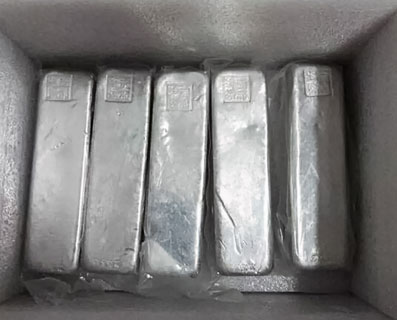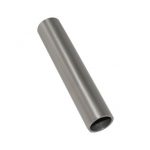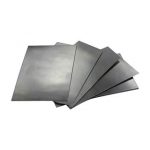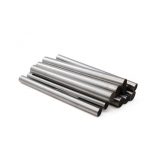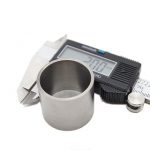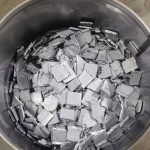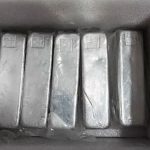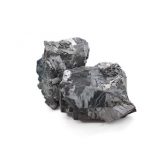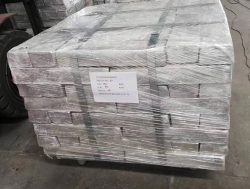Indium Ingot
Soft enough to score with your nails. Good ductility, no work hardening phenomenon during pressure processing, can be rolled into extremely thin sheet.
Application of Indium Ingot
Indium metal has good ductility, strong plasticity, low melting point, high boiling point, low resistance, corrosion resistance and other excellent properties, and has good light permeability and electrical conductivity, and is widely used in aerospace, radio and electronic industries, medical, National defense, high-tech, energy and other fields. The production of ITO targets (used in the production of liquid crystal displays and flat screens) is the main consumption area of indium ingots, accounting for 70% of global indium consumption; followed by electronic semiconductors, accounting for 12% of global consumption; solder and alloys accounting for 12% %; the research industry accounts for 6%.
Production Process of Indium Ingot
Indium main recovery from the metallurgical and chemical byproducts. Adopt two production process, namely, wet extracted parts and electrolytic refining.
Low content (1%) indium has extraction method for raw material extraction, repeatedly replacement hydrolysis method, multiple and dissolving method, ion exchange method, etc. At present, the most factories adopt P204 extraction.
Features of Indium Ingot
01.
Indium is a silver-gray, very soft, fusible metal. The melting temperature of 156.61 ℃. The boiling point of 2060 ℃. Relative density d7.30. Liquid indium can soak into glass and stick to surfaces it touches leaving black marks.
02.
Indium is weakly radioactive. Natural indium has two main isotopes, one is in-113, which is a stable nuclide, and the other is β-decay. Therefore, avoid direct contact as much as possible in use.
